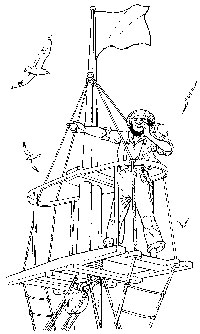F R O M T H E C R O W E ’ S N E S T
What’s Really Going On?

More than ever, fishermen have reason to be concerned about their futures. The feds have proposed closing two large areas in the eastern Gulf of Maine to any gear that can catch groundfish. Recently, a debate about whether lobster traps should be banned in closed areas erupted among NGO representatives and NEFMC members. The topic has been heaped onto the closed-area debate with curious enthusiasm.
Some groundfish restoration supporters of the Machias and Large Eastern Maine closures are backing away from support, fearing unintended consequences. Once closures are in place, trap restrictions could morph into far more negative impacts. Thousands of lobstermen and their communities could be devastated if they were excluded from such large areas. The original intent was to rebuild the habitat that drew groundfish to it in the first place. Dropping passive gear like a lobster trap is entirely different from dragging heavy gear across the bottom.
Large habitat closures are proposed for other areas of the GOM. Spawning habitat is high on the list of reasons for the closures. The Omnibus Essential Fish Habitat Amendment 2 is the biggest thing to roll out of NMFS in a long time, encompassing questions around habitat restoration, spawning grounds, gear restrictions, pollution controls, and science-based comprehensive management.
Fishermen face another conundrum. How does NOAA’s invasion-of-Normandy-scale promotion of finfish aquaculture in the GOM fit into the agency’s idyllic vision an aquatic Eden there? There is private company support for aquaculture, but other support can be traced back to federal funding. Shellfish aquaculture appears ecologically sound and of a scale potentially appropriate to the GOM coastline. By contrast, open-ocean finfish aquaculture as currently practiced around the world is the forced marriage of Mother Nature and Frankenstein. Two are very different aquacultures. GMO bred migratory giants packed into pens and exposed to the assault of sea lice, viruses and stress making them dependent on pesticides and medications.
If NOAA is throwing New England’s ground fishermen under the aquaculture bus, who made the call? Will areas that are proposed for fishing closures be open to finfish pens emptying their chemical, pharmacological and fish waste streams into the new lush habitat? Will some of the inevitable foreign owners be exempt from U.S. environmental laws under the Trans-Pacific Partnership, which is about to be fast-tracked through Congress?
Can the privatization of fisheries be extended to the privatization of the environment without someone saying, “What is really going on?”
